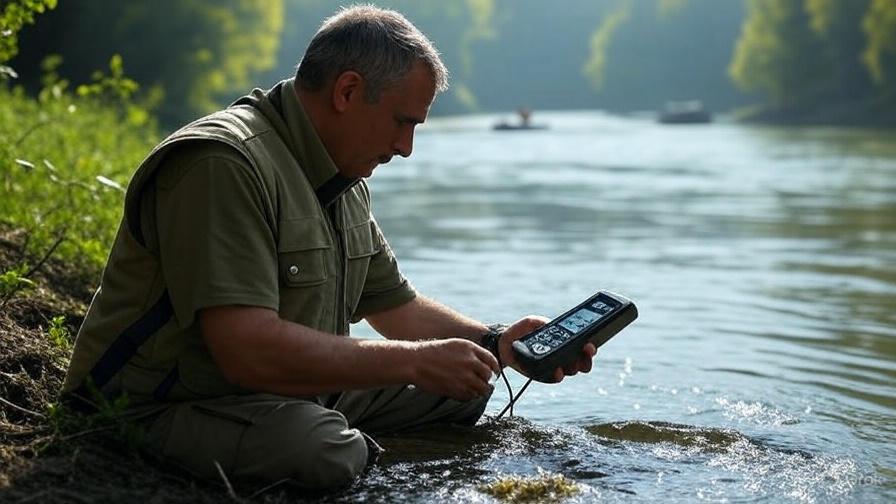Beyond the Riverbank: How Researchers Overcome Environmental Obstacles with PIT Tag Readers

Aquatic ecosystems are dynamic, often unpredictable environments that present a unique set of challenges for researchers studying fish and other wildlife. From the murky depths of a swift-flowing river to the freezing conditions of a remote mountain stream, the natural world doesn't always cooperate. This is where the power of a pit tag reader comes into play. Passive Integrated Transponder (PIT) technology has become an indispensable tool for fisheries biologists and wildlife ecologists, allowing them to track and monitor animals without the need for physical recapture. However, deploying and operating these systems in the wild requires ingenuity and a deep understanding of environmental variables. This article delves into the ingenious ways researchers overcome the most common environmental obstacles to collect vital data using a pit tag reader.
The Challenge of Murky and Fast-Flowing Water
One of the most significant challenges in aquatic research is visibility. Rivers and streams, especially after a storm, can be laden with sediment, making visual observation impossible. Furthermore, fast-flowing water can make it difficult and dangerous to deploy equipment. Traditional methods, such as visual surveys or electrofishing, are often ineffective or logistically unfeasible in these conditions.
The pit tag reader provides an elegant solution. Unlike visual methods, which are dependent on light, PIT technology relies on radio frequency identification (RFID). The reader emits a low-power electromagnetic field that energizes the tiny, glass-encapsulated PIT tag when it passes through the field. The tag then transmits its unique identification code back to the reader. Since this process is not reliant on visual contact, a pit tag reader can be deployed in even the murkiest of waters, making it an ideal tool for monitoring fish migration during periods of high flow or poor visibility.
Researchers have developed specialized antenna arrays, such as instream antennas, to overcome the challenges of fast-flowing water. These antennas are designed to be low-profile and hydrodynamic, minimizing resistance to the current while maximizing the detection area. They can be installed on the riverbed or anchored to the banks, silently monitoring fish movements without disrupting their natural behavior. The data collected by a reader in these challenging conditions is often the only information available to scientists, providing crucial insights into fish behavior during critical life stages like spawning runs.
The Obstacle of Remote and Inaccessible Locations
Many of the world's most pristine and ecologically important aquatic habitats are located in remote, difficult-to-access areas. These locations may be far from power sources and are often only accessible by foot or small aircraft, making it nearly impossible to use conventional tracking methods that require frequent battery changes or data downloads.
PIT tag technology is particularly well-suited for these environments. The "passive" nature of the tag means it requires no internal battery, giving it a theoretical lifespan of decades. This is a game-changer for long-term studies in remote areas, as it eliminates the need for repeated capture and tagging of the same individuals. The reader itself, while requiring power, can be designed to be low-energy, running off solar panels or deep-cycle batteries.
Researchers have developed remote monitoring stations that incorporate a pit tag reader, a power source, and a data logger into a single, self-contained unit. These stations can be left in the field for months or even years, collecting data on animal movements without the need for constant human presence. Data can then be retrieved during periodic site visits, or in some cases, transmitted wirelessly via satellite or cellular networks, making a pit tag reader an incredibly efficient tool for monitoring species in even the most isolated locations.
The Impact of Extreme Weather and Environmental Variables ❄️
Aquatic research is a four-season endeavor, and researchers must contend with everything from flash floods and intense heat to freezing temperatures and ice. These extreme conditions can damage equipment, disrupt tracking, and present safety risks.
A well-designed tag reader system is built to withstand these rigors. Antennas are constructed from durable, corrosion-resistant materials and are often encased in protective sheaths to prevent damage from floating debris, ice, or animal activity. The electronics, including the reader and data logger, are housed in robust, waterproof enclosures that are sealed against moisture and extreme temperatures.
For example, in colder climates, researchers have developed specialized readers and antennas that can be deployed under the ice, allowing them to continue monitoring fish behavior throughout the winter. This is particularly important for understanding how fish survive in freezing conditions and where they seek refuge. The ability of a pit tag reader to operate in these harsh environments provides data on overwintering strategies and habitat use that would otherwise be impossible to obtain.
Furthermore, environmental variables like water temperature, conductivity, and depth can all affect the performance of a reader and its associated antenna. Scientists must carefully calibrate their systems and select the appropriate antennas for the specific conditions of their study site. This attention to detail ensures the reliability and accuracy of the data collected, even in a constantly changing environment.
Data Analysis and the Future of PIT Technology 📊
The journey of the data doesn't end when a fish is detected. The information collected by a pit tag reader is just the beginning. The raw data is downloaded and then analyzed using statistical software to reconstruct the movements of individual animals, estimate survival rates, and identify patterns in habitat use. This analysis provides the foundation for sound management and conservation decisions.
The future of PIT technology is bright, with ongoing advancements focused on making the systems even more robust, efficient, and user-friendly. Researchers are developing new antenna designs to increase detection range and accuracy, and are integrating PIT technology with other sensors to collect even more data on environmental conditions and animal behavior. The passive nature of the tag, combined with the versatility of a pit tag reader system, ensures that this technology will remain a cornerstone of ecological research for years to come.
In conclusion, the pit tag reader is more than just a piece of equipment; it's a testament to human ingenuity in the face of environmental adversity. It allows researchers to listen to the silent conversations of aquatic life, overcoming the obstacles of murky water, remote locations, and extreme weather. By providing an unparalleled window into the lives of fish and other animals, this technology is helping us to better understand and protect our planet's precious aquatic ecosystems.







